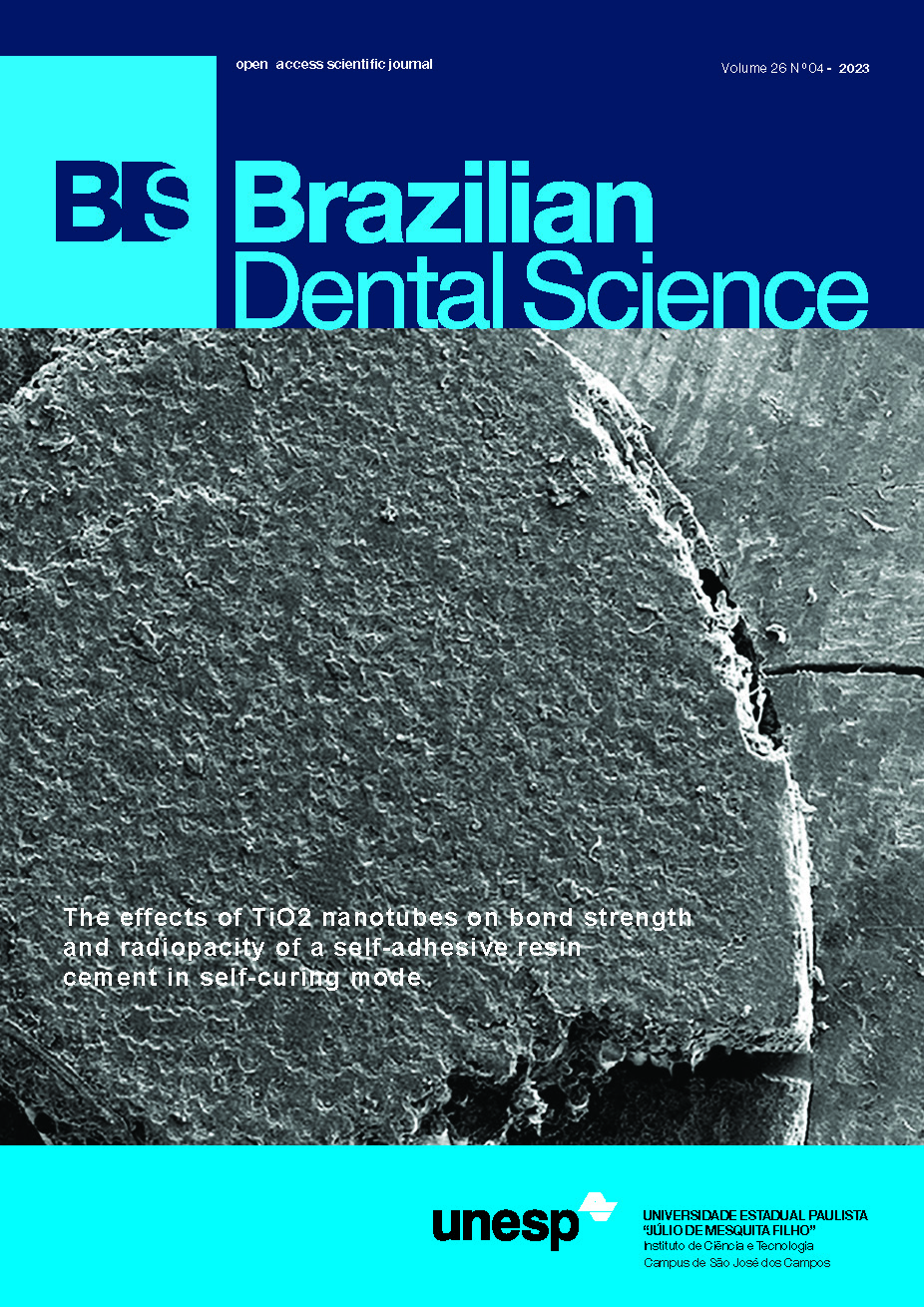Potential effect of platelet rich fibrin prepared under different centrifugation protocols on stem cells from the apical papilla
DOI:
https://doi.org/10.4322/bds.2023.e3847Abstract
Objectives: The present work was designed to evaluate the proliferation and differentiation potential of stem cells from the apical papilla (SCAP) seeded along with platelet rich fibrin (PRF) scaffolds prepared under two different centrifugation protocols. Materials and Methods: Standard and advanced PRF protocols were used. Cells were divided into 4 groups: negative control, positive control, standard (L-PRF) and advanced (A-PRF) groups. Cell count and cell viability assays were carried out to assess the proliferation capacity. Alizarin red S (ARS) stain, Alkaline phosphatase (ALP) activity and Receptor activator of nuclear factor-kappa B ligand (RANKL) immunofluorescence staining were used to evaluate the osteogenic potential in the differentiated cells. Results: Both types of platelet rich fibrin increased the cell count, cell viability with no cytotoxicity that was reflected on increased proliferation and differentiation in terms of the performed tests. Conclusion: A-PRF group showed significant increase in proliferation and differentiation potentials compared to L-PRF group.
KEYWORDS
Alkaline phosphatase; Centrifugation; Platelet rich fibrin; RANKL ligand; Stem cells.
Downloads
Published
How to Cite
Issue
Section
License
Brazilian Dental Science uses the Creative Commons (CC-BY 4.0) license, thus preserving the integrity of articles in an open access environment. The journal allows the author to retain publishing rights without restrictions.
=================




























